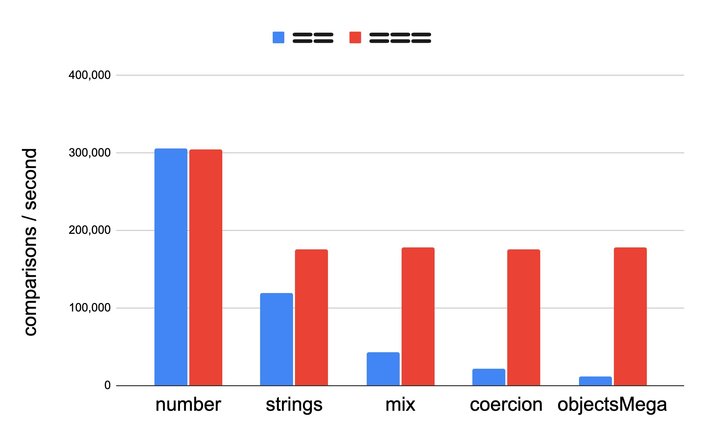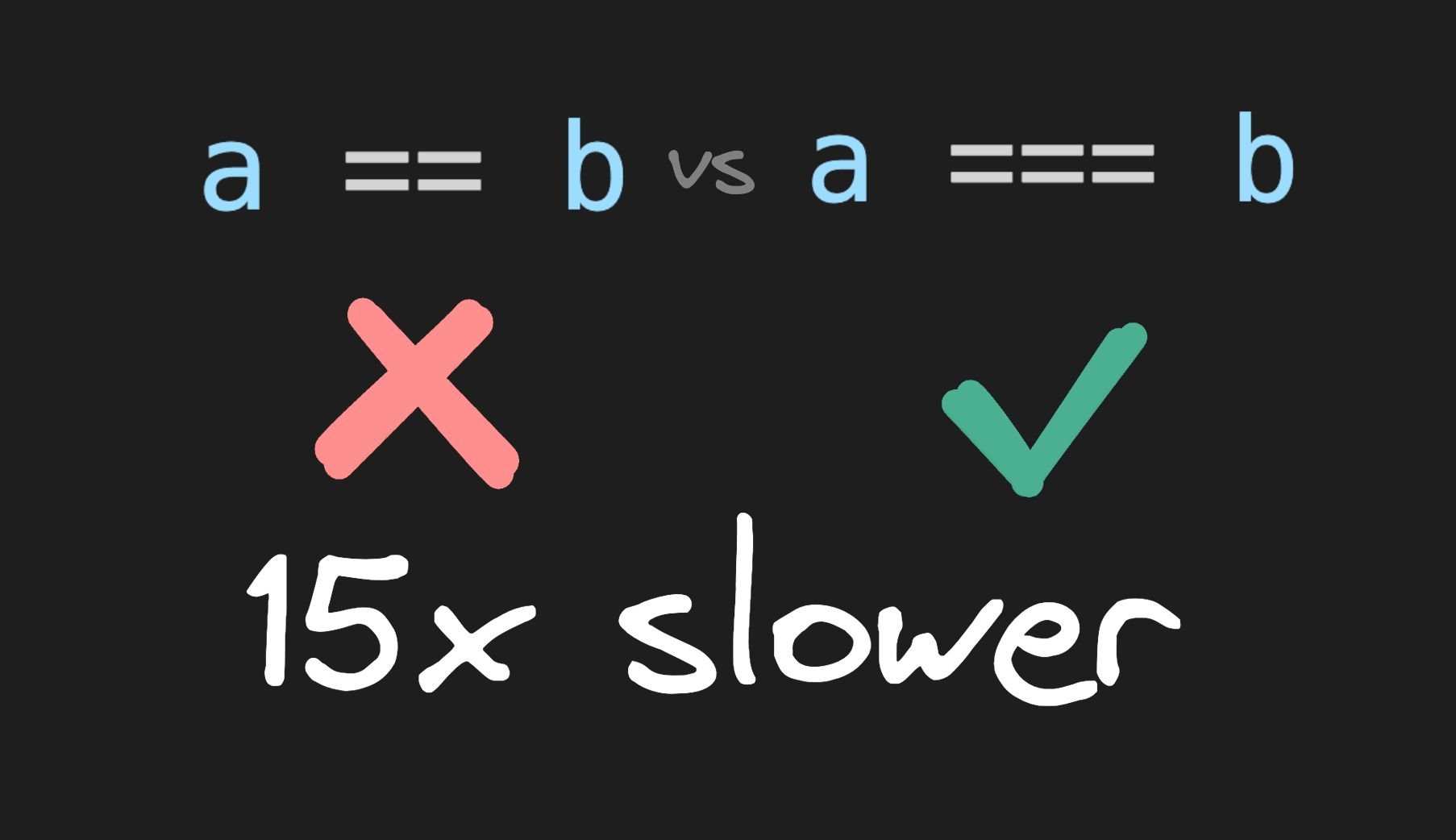We all know that JavaScript has both == (equality) and === (strict equality) operators for comparison. But what exactly is the difference, and more importantly, what is happening under the hood? Let's dive in!
The == is a coercion comparison. Here, coercion means that the VM tries to force the two sides to the same type and then see if they are equal. Here are a few examples of things that are automatically forced into equality:
"1" == 1 // true
1 == "1" // true
true == 1 // true
1 == true // true
[1] == 1 // true
1 == [1] // trueThe coercion is symmetric, if a == b is true, then b == a is true as well. The ===, on the other hand, is true only if the two operands are precisely the same (except for Number.NaN). So, none of the above examples will be true with ===.
The actual rules are complicated (which is a reason in itself to not use ==). But to show just how complicated the rules are, I have implemented the == using the === only.
function doubleEqual(a, b) {
if (typeof a === typeof b) return a === b;
if (wantsCoercion(a) && isCoercable(b)) {
b = b.valueOf();
} else if (wantsCoercion(b) && isCoercable(a)) {
const temp = a.valueOf();
a = b;
b = temp;
}
if (a === b) return true;
switch (typeof a) {
case "string":
if (b === true) return a === "1" || a === 1;
if (b === false) return a === "0" || a === 0 || a == "";
if (a === "" && b === 0) return true;
return a === String(b);
case "boolean":
if (a === true) return b === 1 || String(b) === "1";
else return b === false || String(b) === "0" || String(b) === "";
case "number":
if (a === 0 && b === false) return true;
if (a === 1 && b === true) return true;
return a === Number(String(b));
case "undefined":
return b === undefined || b === null;
case "object":
if (a === null) return b === null || b === undefined;
default:
return false;
}
}
function wantsCoercion(value) {
const type = typeof value;
return type === "string" || type === "number" || type === "boolean";
}
function isCoercable(value) {
return value !== null && typeof value == "object";
}
Wow, that is complicated, and I am not even sure it is correct! Maybe someone else knows of a simpler algorithm, but this is the best I could do. See implementation.
It is interesting to note that if one of the operands is an object, the VM invokes .valueOf() to allow the object to coerce itself into primitive types.
OK, that implementation is complicated. So how much more expensive is == than ===? Check out this chart. (See benchmarks here.)

First let's talk about number arrays. When a VM notices that the array is pure integers, it stores them in a special array known as PACKED_SMI_ELEMENTS. In that case, the VM knows that it is safe to treat == as === and the performance is the same. This explains why there is no difference between the == and === in the case of numbers. But as soon as the array contains things other than numbers, things start to become bleak for ==.
With strings, there is a 50% decrease in performance of == over === and it only gets worse from there.
Strings are special in VM, but as soon as we get objects involved, we are 4x slower. Look at the mix column the slowdown is now 4x slower!
But it gets even worse. An object can define valueOf in order to coerce itself into a primitive. So now the VM has to call that method. Of course, locating properties on objects is subject to inline caching. Inline caching is the fast path for property-read, but a megamorphic read can experience a 60x slowdown, which can make the situation even worse. As shown in the graph as a worst-case (objectsMega) scenario, the == is 15 times slower than === ! WOW!
Now, === is very fast! So even a 15x slowdown with === is not something that will make much difference in most applications. Nevertheless, I am struggling to think of any reason why one should use == over ===. The coercion rules are complex, and it is a performance footgun, so do yourself a favor and think twice before using ==.
Builder.io visually edits code, uses your design system, and sends pull requests.
Builder.io visually edits code, uses your design system, and sends pull requests.




 Connect a Repo
Connect a Repo











